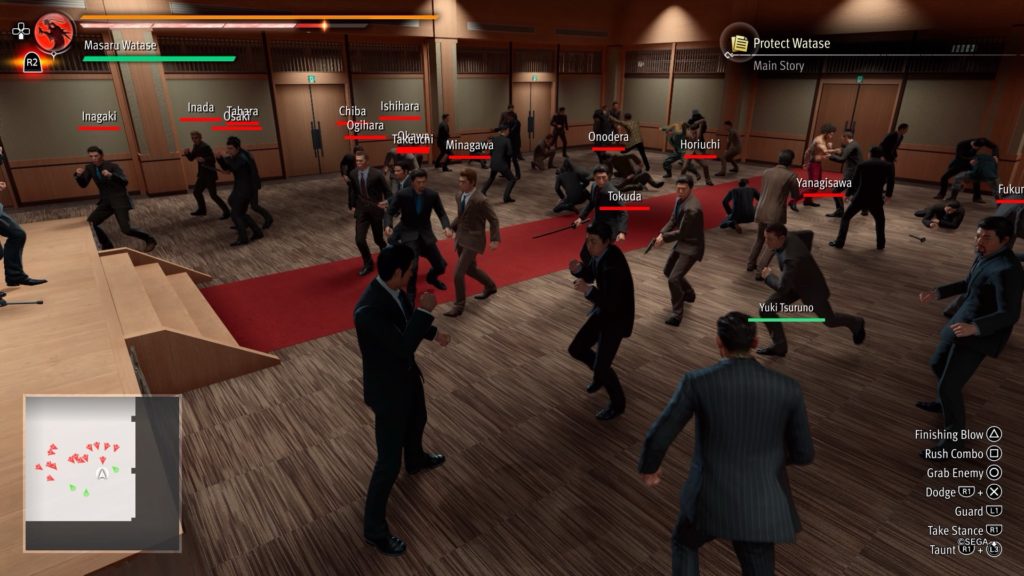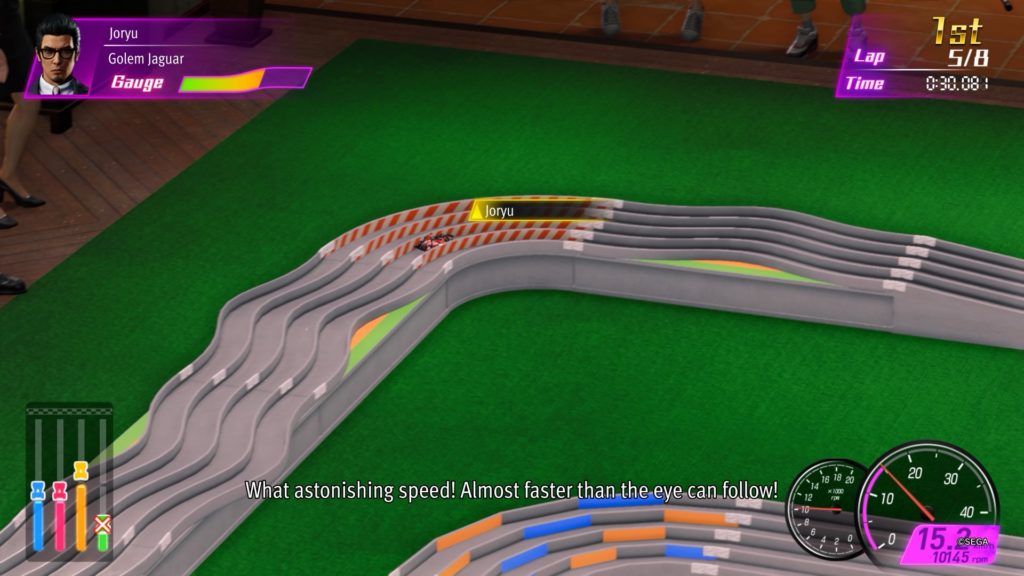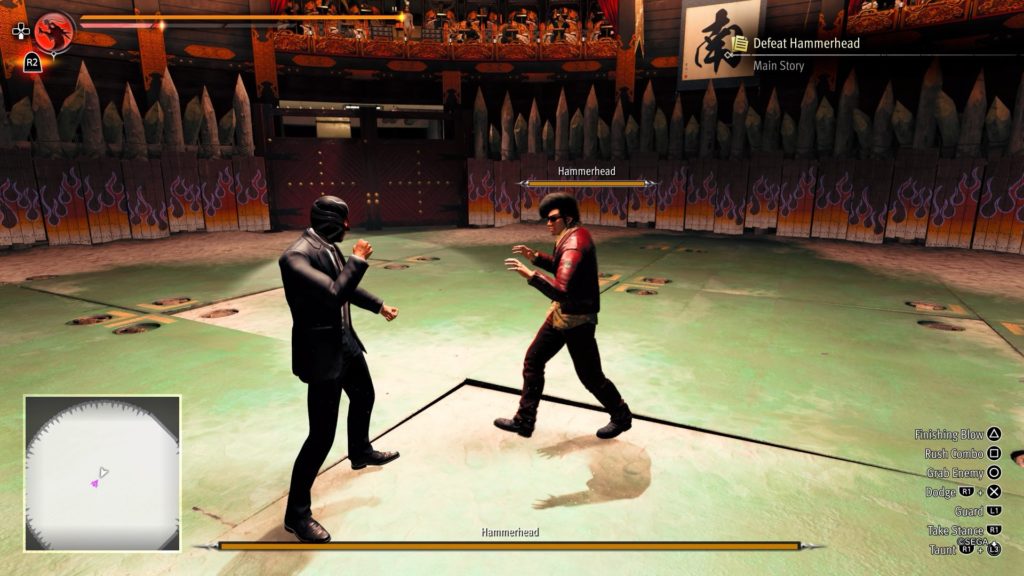- Genre: JRPG
- Platform: PS5
- Also Available On: PS4, Xbox One, Xbox Series, Windows
The original mainline Yakuza series showed a very distinct progression in the quality of its gameplay through the series. The PS2 entries were good, but the PS3 entries were clearly better, and the PS4 entries better still. The combat got more refined. The power curve of the player and enemies got smoother. Grinding was reduced and friction points were reduced. That’s where I feel like this one landed relative to Like a Dragon.
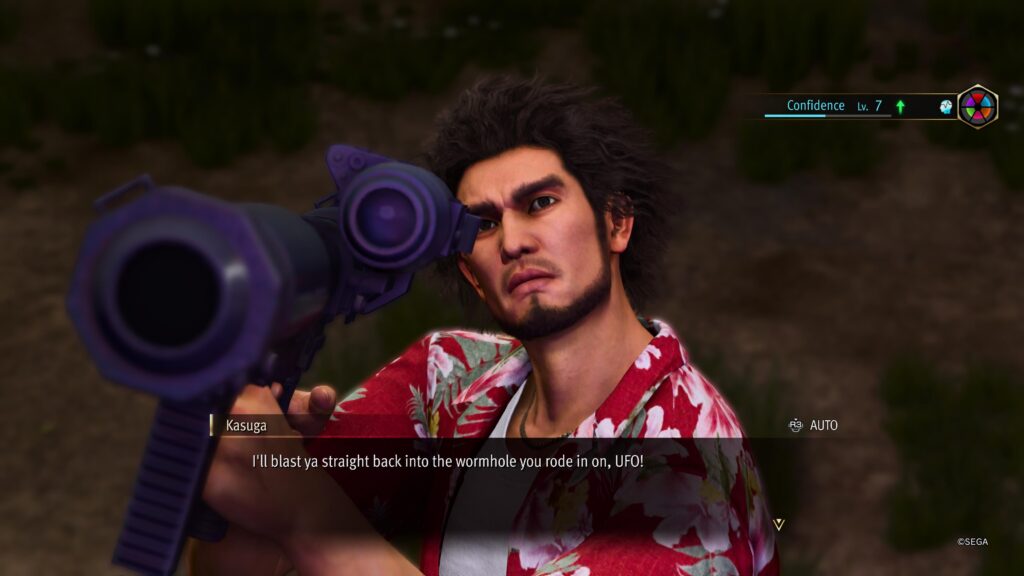
Sequels should be similar, but refined and this definitely fits the bill. In my ramblings about the original Like a Dragon I made note of a few places where the game felt grindy, and I think that’s as good a place to begin as any.
My first point about grinding was specifically around equipment. In the previous title, I felt like I capped out too early on purchases and crafting was too expensive. This game definitely addressed that. I hit the end of the crafting shop investment before end game, but because I still had plenty of gear to purchase out in the world I never really hit a point where I felt like I capped out there. The gear I had wasn’t necessarily end game and could be beneficial to upgrade more for optional content, but for the golden path it felt appropriate. The actual cost of everything was also lower overall combined with significantly higher drop rates. In the previous title I was getting 3-5k yen for near end game trash fights. Here I’m getting more like 50-100k yen in Japan and $1000+ in Hawaii. You are simply getting wildly more money to play with.
I also made note of needing to XP grind. There’s a few things that felt like they addressed that problem here. For one thing, bosses are simply more in line with the levels of everything around them. They aren’t wildly jumping ahead in levels compared to trash mobs, so I don’t have to overlevel just to be on even ground with them. In addition, trash mobs are giving significantly more XP – rather than 1-2k per fight, I’m getting more like 5kl or upwards of 20k for special repeatable world boss fights. It’s a huge difference in terms of time allocated to simply fighting, allowing me to spend more time doing “time waste” side content while also keeping up with the rest of the game.
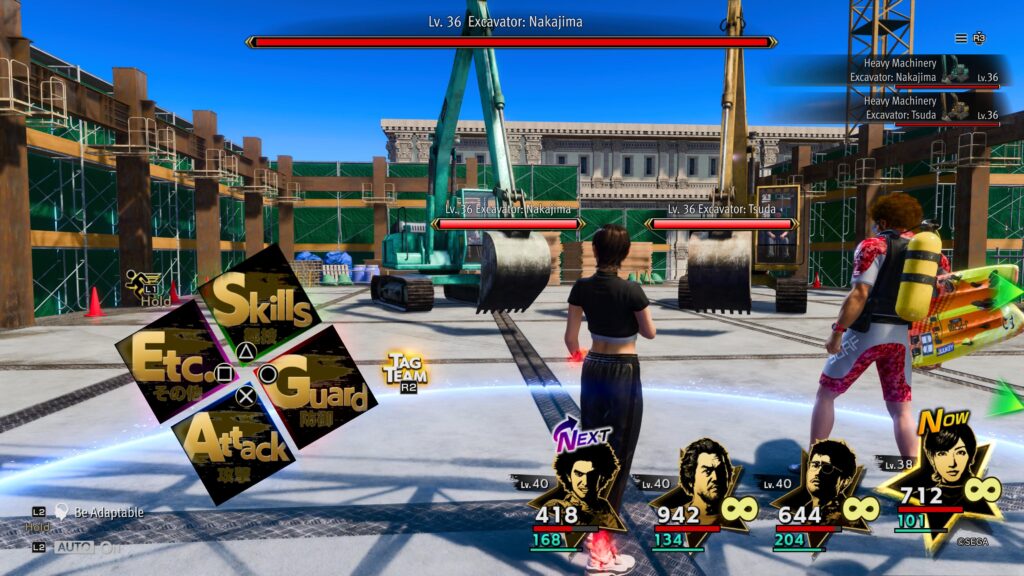
The rest of combat is similar, but again at least feels more refined. The game still has combo attacks and follow-up attacks with your party, but at least compared to my memory they happen more often so the squad feels more like an actual squad with good interpersonal relationships that you built. MP-based attacks – and importantly, MP regen – feels more consistent, really pushing me to use them more often to take down squads quickly. There’s some cool expanded options around tag teams and huge specials that feel like they’re tuned to really nuke bosses quick, giving a really cool power fantasy and payoff to your squad’s growth. Basically, it’s similar but again feels more refined.
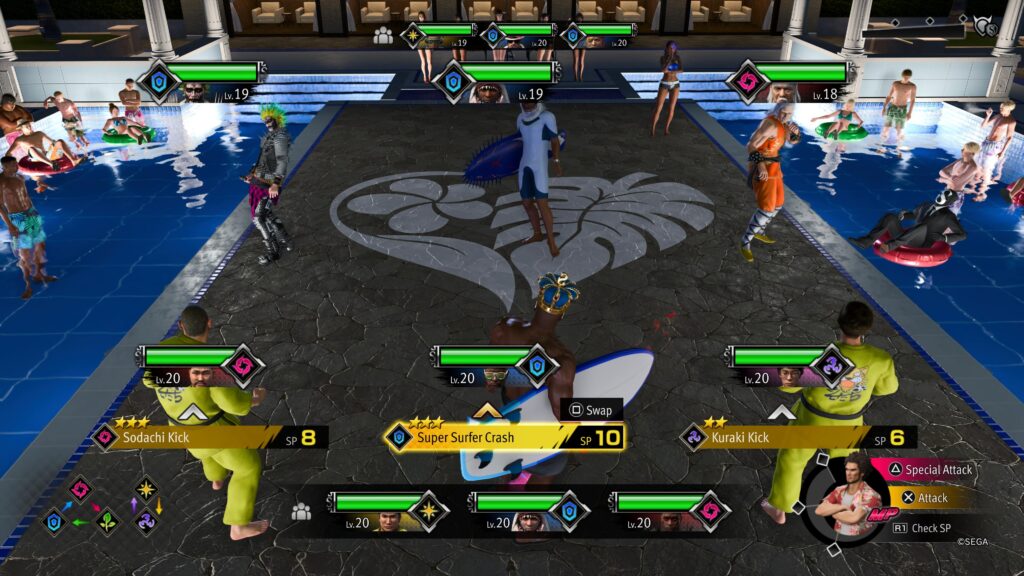
And because this is a Yakuza title, I have to talk about side content. I don’t think it’s quite as good as past entries, but there are two standouts that I need to talk about. The first is Crazy Delivery which is a straight food delivery ripoff of Crazy Taxi. It’s stupid, it’s bright and colorful, it fundamentally makes no sense, but it totally fits in this series.
However, the standout is Sujimon. In the previous game it was basically a Pokedex-only system to collate the people you fought into a Sujidex. This game goes the full Pokemon treatment. You now capture Sujimon and add them to a party, with an entire set of Sujimon side quests. This goes the full Pokemon route with gym fights and badges, leveling, 3v3 battles, weaknesses and strengths, and an entire Pokemon Stadium side content block. It’s a completely ridiculous and over the top set of content, and frankly I would have spent more time on this than the main game if I wasn’t so hooked on the story.
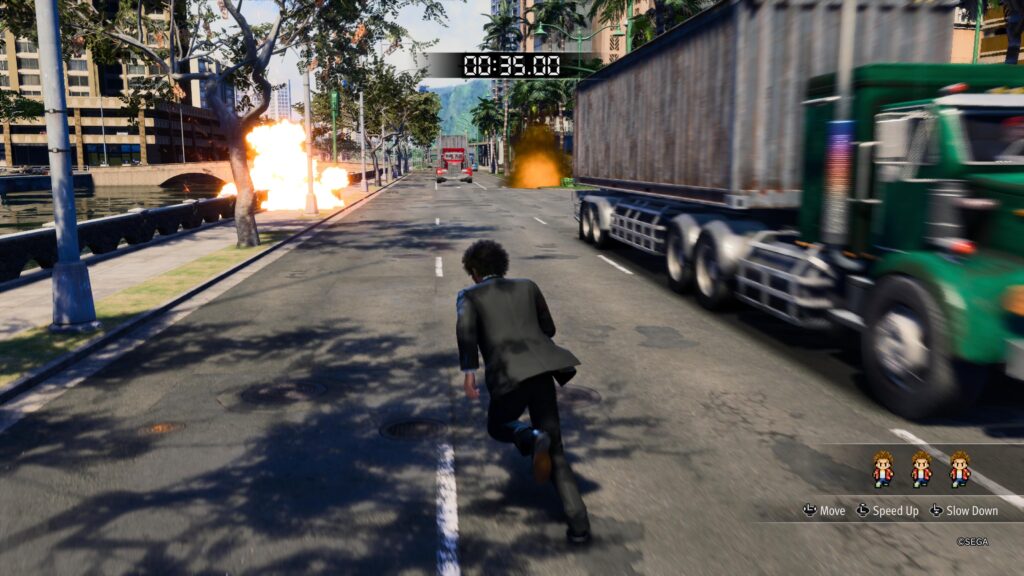
I don’t really want to talk more about the game because I think the story is worth experiencing completely without spoilers, and it would be tough to talk more about the game without getting too deep into that side of things. However I can easily recommend this one. It takes what I thought was already a really solid JRPG transition for the Yakuza series and begins its iteration that the previous action-focused titles did. You can tell that they took feedback from the previous game seriously, and it shows that the next however many titles we get in this style are simply going to be instant plays.


